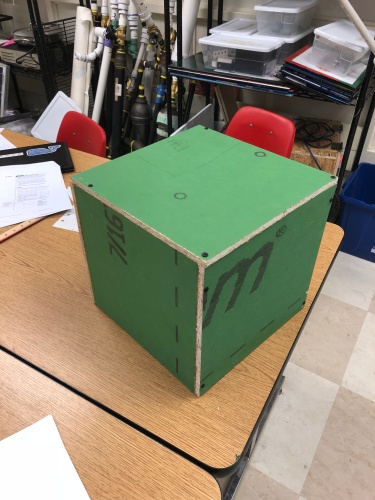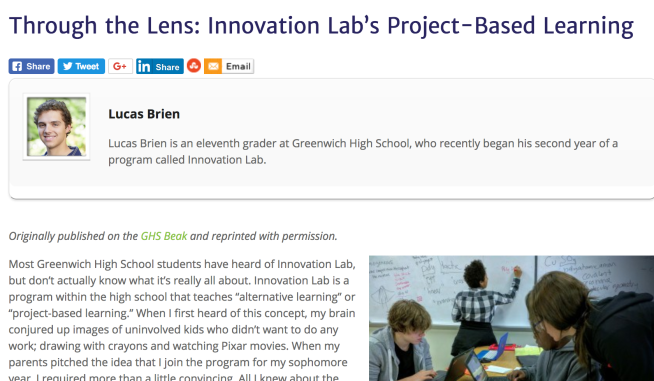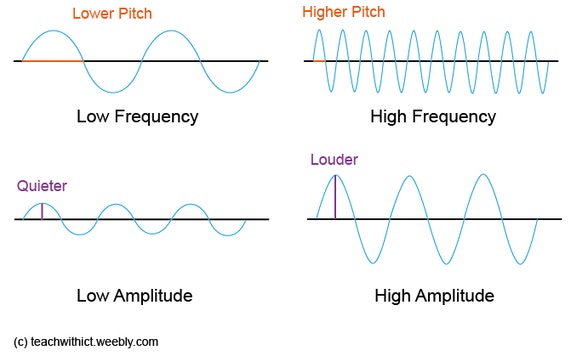Klomgrombomulon looked around the table, studying the other four faces without curiosity. There was a brief period in which he was fascinated being around alien life, but since it became his job he could do nothing but see them as they were: animals. Across the table sat a creature much like Klomgrombomulon, but with smooth leathery skin over his torso where a head would be. Where a head should be, thought Klomgrombomulon. Struggling to find comfort in the chair on his right was a slender, many-legged creature rubbing its wings together. He couldn’t help but be reminded of the insects on his planet, the ones that arrived in swarms and destroyed. Although he knew it was his evolution prevailing over logic, when it extended one of the legs in an interplanetary greeting, Klomgrombomulon’s lips curled over his teeth in disgust. Although he could usually hide his disdain for the wretched life forms around him, he hadn’t been having a very good day. The creature blinked its fist-sized lifeless red eyes and lowered its thin appendage without visible emotion. They sat around a long black table, waiting for the meeting to begin.
Although he was the only representative of his planet, Cramara, it had been many years since he’d had the displeasure of seeing these unfortunate faces for the purpose of a Council of United Life meeting. Cramarians generally preferred to be on their temperate, lush planet around other Cramarians, and Klomgrombomulon was no different. But he was needed, so he came.
“It’s been a while since we got new council members, huh?” chirped a nasally voice across the table. Klomgrombomulon looked down at the pathetic specimen–a Scothumite. With a totally hairless white face, devoid of lips, eyelids, or a nose, the tiny creature looked around expectantly, hoping to receive a response from somebody. Klomgrombomulon had been avoiding contact with its horrible eyes for a few seconds when the doors at the end of the room slid open silently and two creatures entered. Klomgrombomulon had long since given up on learning the names of the 5 alien races, but he recognized the taller one, with its arched back and hair covered face, as Borroque. The other one, small and grey, spoke with a booming voice.
“Three days ago Pathfinder C61 detected intelligent life on a planet, Earth, about 4.5 light years from here.”
It flicked its wrist and in the air hung a blue screen. It depicted a solar system showing eight planets, and zoomed in on the third one from its star. It was quite a beautiful planet, hues of green with their blue ocean gave the impression of life. “Most of the surface is covered in water, and it has four seasonal periods, a 6.4 thousand kilometer polar radius, and an atmosphere comprised mostly of nitrogen and oxygen. The lifeforms call themselves humans.” On the screen appeared such a creature; small patch of brown hair covered its head, and it outstretched its arms proudly. Klomgrombomulon found it oddly compelling, and strangely beautiful. It resembled his kind substantially; the only noticeable differences being its light color and smooth skin, contrasting the thick, red hide that kept Cramarians safe during their hellish winters. He suddenly felt an admittedly silly connection to the creature, far more so than any other bipedal alien race he’d met.
“They’re about 12 units tall, and have highly similar neural systems to the Cramarians, within 94.5 percent.” Heads turned to study Klomgrombomulon–he found he didn’t appreciate it.
“And there are almost 8 billion of them.”
Klomgrombomulon looked around the room to see if their disbelief matched his; he found it did.
“8 billion?” asked the tiny creature next to Klomgrombomulon. “How?”
“Well, reproducing provides them with more pleasure than literally anything else on their planet. Their numbers are on track to double in about 60 years.”
“On the one planet?” asked the torso. “How is that sustainable?”
“It’s not. Their practices are preposterous, and it’s destroying them. Almost a billion of them are starving, but they throw away half their food uneaten every day.”
“What? Why?” asked the torso. “I don’t understand.”
“There are areas of their world in which almost all of them go without the sustenance or H2O that they need, and there are other parts of the world in which everyone has what they want, and wastes indiscriminately.”
“What happens to the food?”
“They bury it.”
Klomgrombomulon snorted with laughter, no longer feeling such a sentiment for the creature.
“I presume they haven’t begun to dabble with particle reduction?” he asked.
“No, nothing of the sort, although I suspect they wouldn’t use it to solve their problems even if they did. The human brain has developed a fatal case of ‘out of sight, out of mind,’ which leads to them placing trivial, insignificant problems like receiving disapproval from one they will never meet again-,”
“This is seriously one of their biggest causes of stress” interrupted the Borroque. “Some humans are crippled by it.”
“-ahead of the imminent extinction of their species. Because they won’t be the ones to die out, but rather future generations, they just don’t think about it, and therefore don’t solve these problems.”
The creature flicked its wrist again, showing on the screen many pie graphs, the vast majority of most covered in red.
“These are their 24 essential species, the ones most likely and able to feed and provide nutrients to their population were they to be respectfully harvested. Many have lost over 90 percent of their numbers because of relentless hunting, and their biomass as a whole has dropped over 60 percent.”
“It’s just… frustrating to see such an inability to perceive the future,” muttered the nasally Scothumite.
“My florpdorp,” boomed the smaller presenter, “I’ve been trying to stay professional this whole time–it’s impossible. We know all this from monitoring their broadcasts–which means, by the way, that we only know this because they do too–but you wouldn’t believe the crazy shit they have on there. They call it the internet–billions of them post whatever they feel is a meaningful contribution to the knowledge of their species, but some of it is just horrifying and so so strange. And for some reason, they’re all obsessed with these animals.”
On the screen appeared two creatures, quadrapedic and covered in fur. The larger one was yellow, and the smaller one’s tail pointed in the air. The labels under them said DOG and CAT.
“They enslave these creatures by the millions, sometimes treating them and talking to them as if they’re humans. We have no indication that they can understand them; we don’t really know why they do this. We found millions of videos of these animals just existing; it appears the humans watch these for pleasure.”
“They’re advanced enough to broadcast this garbage past their atmosphere, but they’re not solving any of their problems?”
“Their population exists in almost 200 separate governments, many of which are trying to destroy each other at any given time, usually over money, land, or pride. They believe themselves too preoccupied with such conflict to unite and solve the problems that will destroy them all. While they’re fairly advanced technologically, their failure to determine what is deserving of advancement would lead you to believe otherwise. The nation they consider their “superpower” spends more money on air conditioning for its warriors than it does on researching space travel. The farthest they’ve been is their own moon, and it’s highly unlikely they’ll ever leave their Solar System.”
Klomgrombomulon cared to listen no longer and spoke up. “Yes, this is unusual, but the universe is an unusual place. Why have we been gathered here? Surely these kinks are nothing a few of our consultants couldn’t work out.”
“Well, it seems humans have a history of violence. Before their technological revolution,” said the small man, barely concealing his contempt, “undeveloped humans encountered by more developed ones would invariably be enslaved and murdered. It’s likely that were we to initiate physical contact, humanity would project their murderous nature onto us and strike preemptively.”
Klomgrombomulon almost laughed. “Strike the Cityfleet? Tell me, with what would they strike us?”
“While their focus on conquering and destroying rather than cooperation has left them centuries behind us technologically, their weapons are like nothing we’ve ever seen. Their last major conflict, which, by the way, killed over 70 million of them, ended with the dropping of two bombs on two urban centers.”
On the screen appeared a primitive photo of a primitive, but sprawling city. And then, nothing but ruins.
“The bombs utilized nuclear fission, causing an explosion that wiped out over 90 percent of both cities. Two hundred thousand of them.” Klomgrombomulon heard a high pitched whistle from the winged being across the table–he took this as a portrayal of alarm. Two hundred thousand deaths would mean the extinction of his species.
“They now have fifteen thousand nuclear bombs; some of them are thousands of times more powerful than the ones used in violence.”
Klomgrombomulon looked around once more at the somber faces around him. Everyone was beginning to understand; these creatures wouldn’t just kill themselves, they would kill everything–if spooked.
“While we’ve never done such a thing before, the proposal being made to the Council of United Life is that we initiate a Do-Not-Contact protocol with Earth, and reevaluate their standing in 75 years. We feel the ways both the planet and the council would benefit from the relationship are far outweighed by the risk of catastrophic loss of life that may be experienced were the Cityfleet to be transported within communication distance of Earth. Are there any questions before we put this proposal to a vote?”
The representative for the Askies, a slender, blue creature with a pointed face, spoke. “What do they have to offer?” A fair question, but Klomgrombomulon doubted he would be interested enough in the answer to sway his conscience.
“Most of the reason humans find themselves stuck in this unfortunate state is that those most likely to seek and attain power are also those least likely to value life outside their own. The truth is that humans are extremely variable. They produce as many artists as they do murderers, as many inventors as they do thieves. Some of what we’ve seen proves that their capability to create is just as great as their capability to destroy. That being said, a beautiful song won’t do much against one of those bombs.”
Silence. Solemn faces considered the weight of their next move. The creature addressed the room once more.
“All in favor of disregarding the proposal and initiating contact with Earth, please speak.”
“We can help them,” said the Askie, “if we speak to their leaders and arrange a compromise. They are an adolescent species and deserve the same chances that all of our people have enjoyed. If we leave them to die in space, we would be no better than them.”
“Yes, it sounds like these creatures could benefit from some perspective.” The tiny white alien was hard to take seriously but spoke with confidence. “Their only reference point is themselves. Once they realize how huge, yet solvable their problems are, it may incentivize them into becoming a respectable council member. The universe is a big place, and intelligent life is rare; we can’t let them wither out.”
“Yes,” said the torso, “life is rare, too rare to put at such a risk for the sake of these stupid creatures. I propose that we eliminate them from the record completely, leave them to sort out their own problems.”
Klomgrombomulon couldn’t help but compare the humans to his people. Many thousands of years ago, Cramarians walked down a similar path of bloodshed, slavery, and pain–within years of their extinction, they were saved, becoming the third race to join the council. Although this history is mostly forgotten, overshadowed by vast accomplishments and breakthroughs to come, Klomgrombomulon couldn’t help but feel responsible for them, for the generations of future humans and what they would create.
“I see no real reason for us to risk everything for this backward people,” buzzed a device the winged being held to its clicking mandibles. “What could we tell them that they don’t already know? That murdering each other is counterproductive? Knowledge of this bomb alone has the potential to be just as dangerous as its creator. I also propose that we strike their existence from public record.” It put the device onto the table and turned to look at Klomgrombomulon. Everyone had voiced their thoughts; he was the final vote; the deciding factor. “Leave them. We’re no more responsible for their fates than they are. If they voluntarily disappear into space, who’s to say it’s not for the best?”
The resulting silence was broken by a confirmation from the smaller presenter.
“I will notify the records department, and contact Pathfinder C61 to continue on their journey. Thank you for your time, council.”
They performed the interplanetary greeting and left the room.
Alone in the universe, thought Klomgrombomulon. What a terrifying thought.




 I’m currently gathering potential candidates for interviews, most notably a survivor of the massacre who later went on to share her story countless times. I’m hoping that through these resources, I’ll be able to answer my question and illuminate this tragic story so that it may never happen again.
I’m currently gathering potential candidates for interviews, most notably a survivor of the massacre who later went on to share her story countless times. I’m hoping that through these resources, I’ll be able to answer my question and illuminate this tragic story so that it may never happen again.


